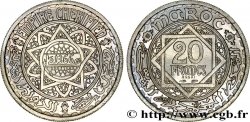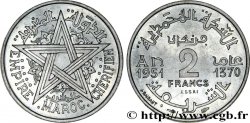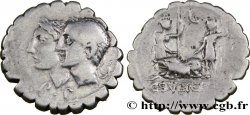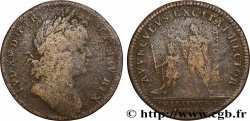fco_829672 - MOROCCO - FRENCH PROTECTORATE 5 Dirhams essai Cupro-Nickel Morlon AH 1349 n.d.
2 500.00 €
Количество
Добавить в корзину

Тип 5 Dirhams essai Cupro-Nickel Morlon AH 1349
Дата: n.d.
Количество отчеканенных монет: -
Металл: copper nickel
Диаметр: 32,17 mm
Ориентация осей монеты: 7 h.
Вес: 12,01 g.
Век: lisse
Редкость: INÉDIT
Комментарии о состоянии
Infimes traces de manipulation
Ссылки в каталоге: :
Происхождение:
Cet exemplaire provient de la Collection Michel
Лицевая сторона
Аверс: легенда: EN ARABE, AU CENTRE : DEMI-RIAL DE MOULAY YOUSSEF, LE NOBLE ; DANS LES CANTONS DE L’ÉTOILE : QU’IL SOIT ACCOMPAGNÉ PAR LA JOIE, LA CHANCE, L’AMOUR DE SON PEUPLE, LA GLOIRE, ET CE, POUR TOUJOURS.
Аверс: описание: Sceau de Salomon cerclé en son centre.
Обратная сторона
Реверс: легенда: REPVBLIQVE - FRANÇAISE.
Реверс: Описание: tête de Marianne à droite et signature Morlon.
Комментарий
Cette frappe est inédite en cupro-nickel.
Cet exemplaire, qui ne s’aimante pas, est manifestement en cupro-nickel. Il est donc dans un métal inédit au Lecompte.
Par ailleurs, Lecompte signale une frappe médaille. Il s’agit ici d’une très étrange frappe à 7h qui se rapproche donc plus d’une frappe monnaie.
Nous avons souvent inversé les illustrations du livre de Jean Lecompte avers/revers car le Maroc étant un protectorat, la puissance émettrice, théoriquement placée à l’avers, est le roi du Maroc et non la République française.
Pour cette pièce, qui ne mentionne pas de statut politique particulier ni n’utilise le système inspiré de celui des Français (qui n’apparaît qu’en 1339 A.H., on devrait certainement placer à l’avers le nom et les titres du roi. On notera que dans ce cas l’avers porte également la valeur faciale, le revers une autre expression de la valeur faciale, le lieu et l’année de frappe.
Malheureusement, entre les intentions des responsables marocains, l’exécution par la Monnaie de Paris (nous avons vu que l’auteur des coins ne connaissait pas la langue arabe) et les traditions locales éventuellement différentes, il est très difficile de trancher.
This strike is unprecedented in cupro-nickel.
This example, which does not magnetize, is clearly made of cupro-nickel.. He is therefore in an unpublished metal at Lecompte.
Furthermore, Lecompte reports a medal strike. This is a very strange strike at 7 o'clock which is therefore closer to a coin strike..
We have often reversed the illustrations in Jean Lecompte's book, obverse/reverse, because Morocco being a protectorate, the issuing power, theoretically placed on the obverse, is the King of Morocco and not the French Republic..
For this coin, which does not mention any particular political status nor does it use the system inspired by that of the French (which only appears in 1339 A. H. , the name and titles of the king should certainly be placed on the obverse. It should be noted that in this case the obverse also bears the face value, the reverse another expression of the face value, the place and year of minting.
Unfortunately, between the intentions of the Moroccan officials, the execution by the Paris Mint (we have seen that the author of the coins did not know the Arabic language) and the possibly different local traditions, it is very difficult to decide
Cet exemplaire, qui ne s’aimante pas, est manifestement en cupro-nickel. Il est donc dans un métal inédit au Lecompte.
Par ailleurs, Lecompte signale une frappe médaille. Il s’agit ici d’une très étrange frappe à 7h qui se rapproche donc plus d’une frappe monnaie.
Nous avons souvent inversé les illustrations du livre de Jean Lecompte avers/revers car le Maroc étant un protectorat, la puissance émettrice, théoriquement placée à l’avers, est le roi du Maroc et non la République française.
Pour cette pièce, qui ne mentionne pas de statut politique particulier ni n’utilise le système inspiré de celui des Français (qui n’apparaît qu’en 1339 A.H., on devrait certainement placer à l’avers le nom et les titres du roi. On notera que dans ce cas l’avers porte également la valeur faciale, le revers une autre expression de la valeur faciale, le lieu et l’année de frappe.
Malheureusement, entre les intentions des responsables marocains, l’exécution par la Monnaie de Paris (nous avons vu que l’auteur des coins ne connaissait pas la langue arabe) et les traditions locales éventuellement différentes, il est très difficile de trancher.
This strike is unprecedented in cupro-nickel.
This example, which does not magnetize, is clearly made of cupro-nickel.. He is therefore in an unpublished metal at Lecompte.
Furthermore, Lecompte reports a medal strike. This is a very strange strike at 7 o'clock which is therefore closer to a coin strike..
We have often reversed the illustrations in Jean Lecompte's book, obverse/reverse, because Morocco being a protectorate, the issuing power, theoretically placed on the obverse, is the King of Morocco and not the French Republic..
For this coin, which does not mention any particular political status nor does it use the system inspired by that of the French (which only appears in 1339 A. H. , the name and titles of the king should certainly be placed on the obverse. It should be noted that in this case the obverse also bears the face value, the reverse another expression of the face value, the place and year of minting.
Unfortunately, between the intentions of the Moroccan officials, the execution by the Paris Mint (we have seen that the author of the coins did not know the Arabic language) and the possibly different local traditions, it is very difficult to decide







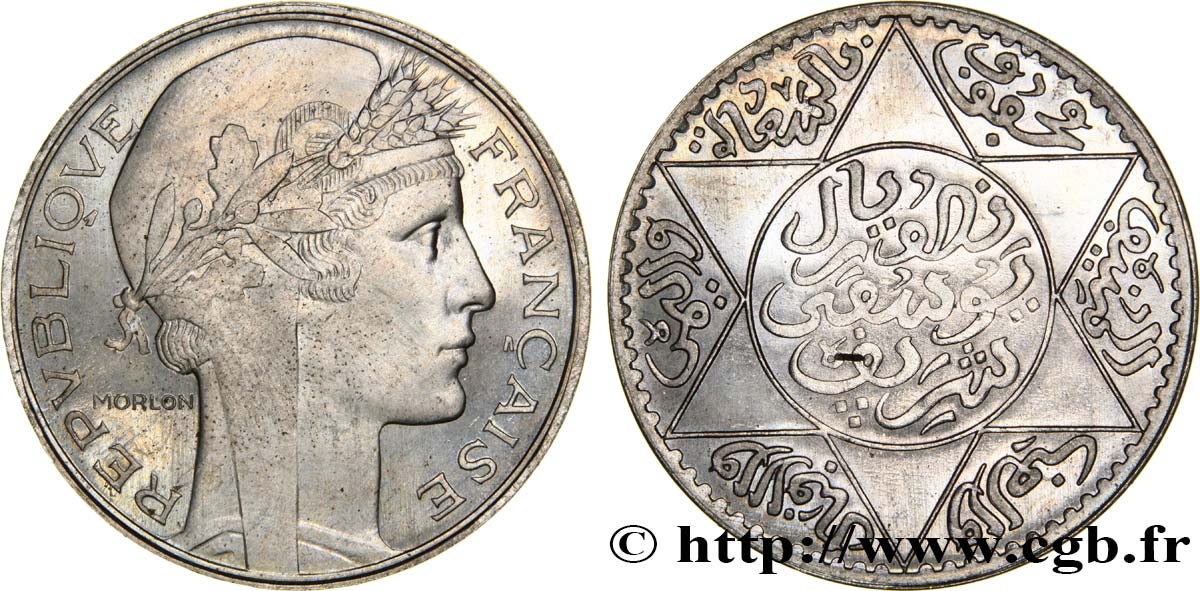
 Cообщить об ошибке
Cообщить об ошибке Распечатать страницу
Распечатать страницу Отправить мой выбор
Отправить мой выбор Задать вопрос
Задать вопрос Consign / sell
Consign / sell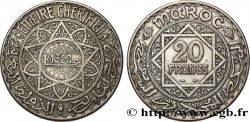
 Информация
Информация